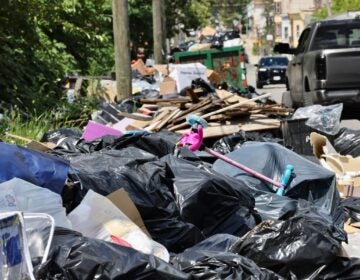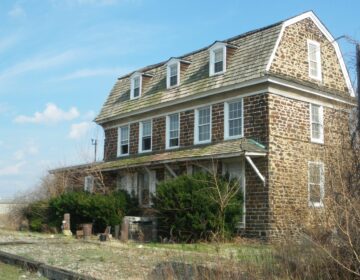Economic Sustainability: The Indispensable Value
By Matt Blanchard
For PlanPhilly
Of the five values for our waterfront identified during citizen forums, one speaks far louder than the rest. Economic Sustainability is likely to shape our waterfront more than Safety, History, Diversity, and the Environment combined.
For 300 years, Philadelphia’s riverfront has been a map of what pays the bills: Shipyards and sugar refineries in the 1800s, container ports and condominiums today.
That story has reached a critical point today. With acres of vacant shoreline and a sudden building boom, Philadelphia’s riverfront could be entirely recast within a decade.
That’s why longshoreman flood community meetings in protest. That’s why casinos are so eager to site themselves in what used to be wasteland. And ultimately, that’s why Penn Praxis is working at top speed to develop a citizen-driven master plan for the waterfront. Without a strong public voice guiding development, the future will be authored by politics and money.
How to separate the good economics from the bad?
Citizens spoke out on this issue at Penn Praxis sessions, brainstorming strategies to foster the right kind of economic development on the river.
Two major themes emerged most frequently.
Save the Port
First, that the working port should be given the space it needs to prosper. The International Longshoremen’s Association claims that 45,000 jobs arise directly from the Port of Philadelphia, funneling $43 million in the city’s tax coffers each year. Longshoreman worry that casino development will choke their trucking routes with traffic and eat up essential port expansion space (See: The Hows and Whys of the Working Port Protest). Judging by citizen input, a wide spectrum of Philadelphians share their fears.
“Anything we can do to support the shipping industry is worth doing,” said Herb Shallcross, president of the Northern Liberties Neighborhood Association. “It represents an enormous amount of money coming into town.”
What’s more, people like ships. Many spoke to the majesty of cargo ships cruising up the Delaware River.
“I’ve been around Penn Treaty Park all my life,” said Sandy Salzman, executive director of the New Kensington Community Development Corporation. “I can just remember all the kids taking off, running to see a big ship going upriver … Our community doesn’t want to be all condominiums. We want a mix of uses.”
Build Our City on Our River
A second common theme dealt with human scale. In those places where large-scale shipping is impossible – which is most of the seven-mile study area – the city should seek to encourage an intimate scale of housing and commercial buildings. There are too many big plans, big box retailers, and big empty spaces on the river.
Or as one woman put it: “The current waterfront is too proscribed, too concrete. It has somehow lost the Philadelphia feel. It’s lost the historic building footprints. It’s lost the historic materials.”
Citizens said that mandating a mix of uses on an intimate scale was seen as a way to create vitality that could pay real dividends in terms of tourism. Some imagined Seattle’s Pike Place Market. Others envisioned botanical gardens, boat-building shops, cruise-ship terminals, sculpture gardens, high-tech research facilities, houses – preferably all mixed up in an jumble of sights, sounds, experiences and views.
Access is Economics
An overwhelming number of citizens argued that free and open access to long swathes of riverbank was their sine qua non. Access, access, access – the chant was common to groups studying each of the five values.
In terms of Economic Sustainability, the desire for access was often blended with the desire for a mix of uses to make a postmodern version of the bustling nineteenth century waterfront. More docks, more marinas, more homes, more fishing piers, more everything.
“People talked about seeing cruise ships and large ships, and little shops and restaurants. One woman wanted office buildings, and some wanted to see an old quaint fishing village on the Delaware,” explained citizen Tom Sprague.
“The common denominator was access,” he said. In other words, Philadelphians getting to the river’s edge on their own two feet and being surrounded by life when they get there.
WHYY is your source for fact-based, in-depth journalism and information. As a nonprofit organization, we rely on financial support from readers like you. Please give today.






